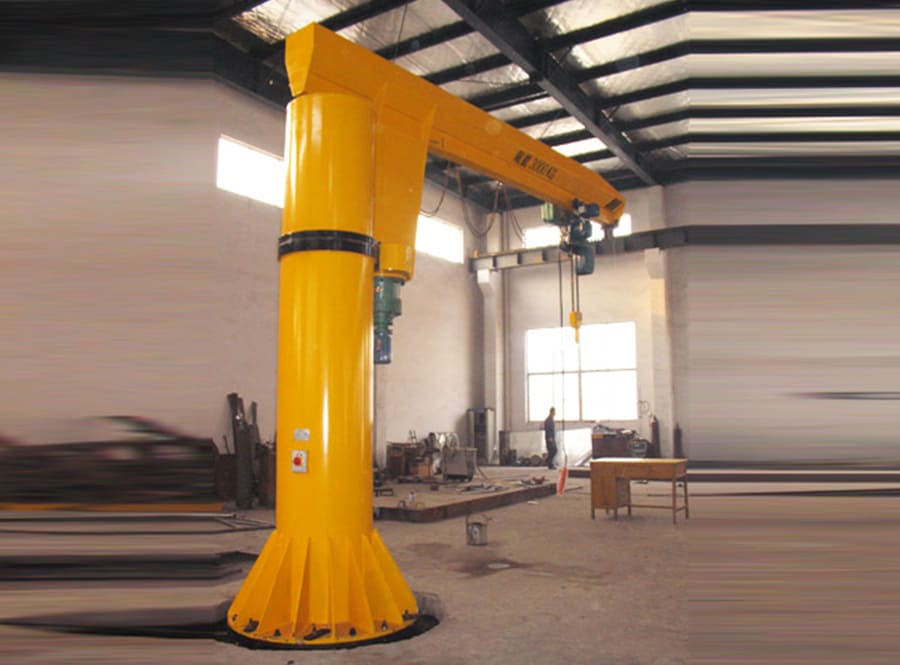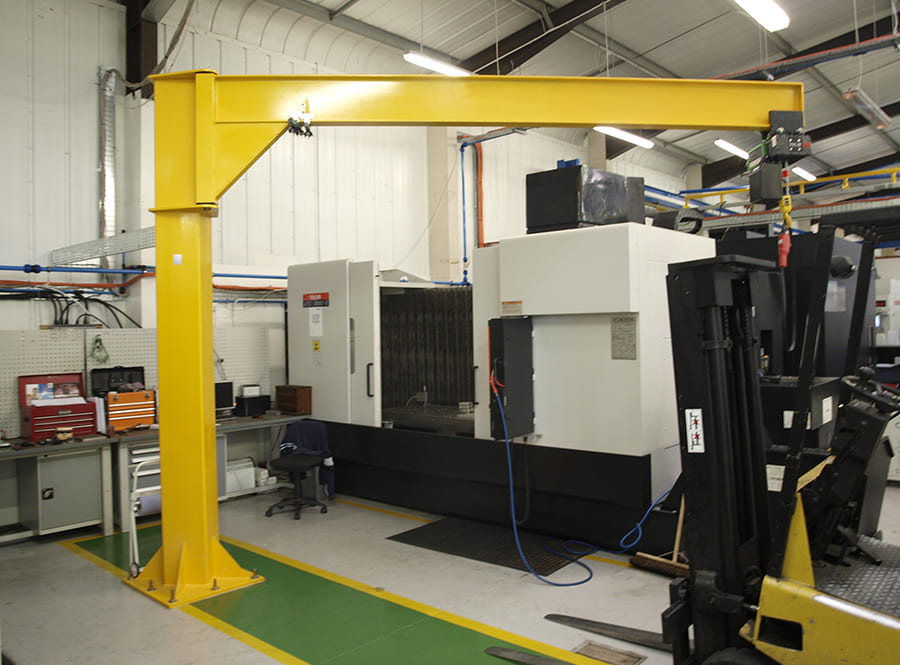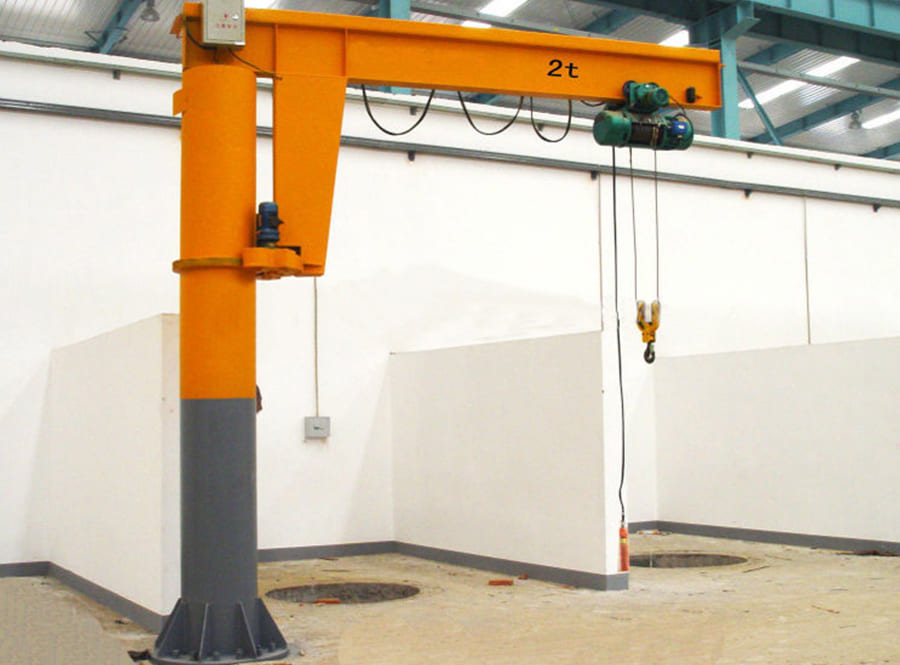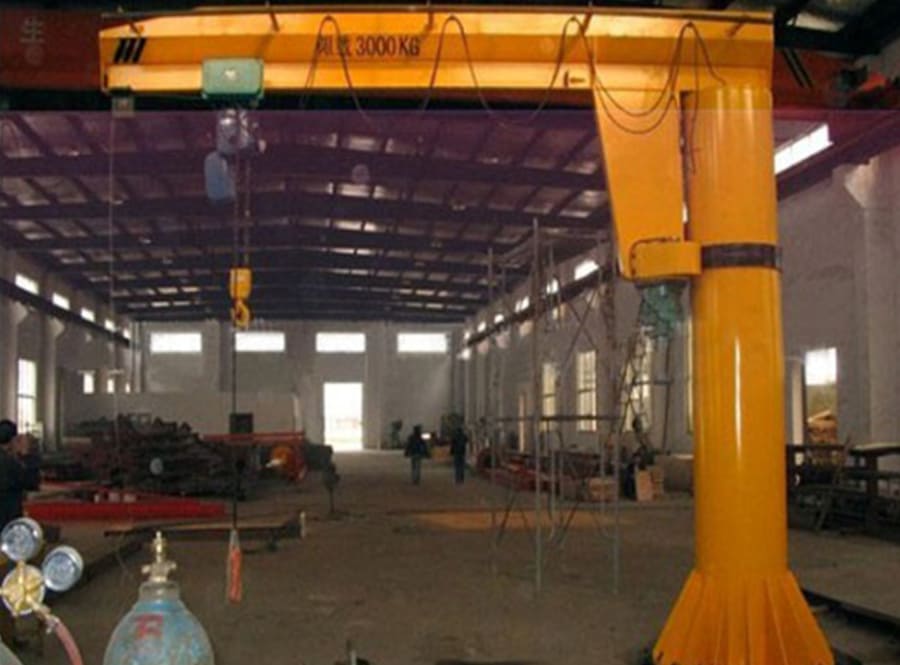The following is a simplified set of steps for jib crane on wheel calculating electrical enclosure temperature rise:
First, find the input power, expressed in watts per square foot. Divide the amount of heat dissipated within the enclosure (in watts) by the enclosure’s surface area (in square feet).

Then, find the input power in watts per square foot on the bottom shaft. Draw a vertical line from this number until sevencrane jib crane on wheel manufacturer intersects one of the temperature rise curves. Use the upper curve if your enclosure is made of raw aluminum or stainless steel, or use the lower curve if your enclosure is non-metal or painted metal.
Draw a horizontal line from the intersection point to the vertical axis of the chart. This is the approximate degree by which the temperature inside the enclosure is above ambient temperature.
These steps will give you a basic understanding of the estimated total heat load of your cabinet. However, cheap jib crane on wheel supplier is always important to have an electronic engineering professional conduct a detailed examination of the enclosure’s temperature rise, especially when designing mission-critical equipment that could create a safety hazard if it malfunctions.
Heat dissipation measures

Device manufacturers use many types of devices and thermal management techniques to dissipate the heat generated within the enclosure, including:
Surface Area Dissipation (SAD): The simplest method of controlling enclosure heat, surface area dissipation is a passive method that relies on natural thermal radiation from the enclosure’s surface area. SAD can provide adequate cooling for smaller enclosures that don’t house high power-draining components, but many devices will require more.
Ventilation: Ventilation is one of the simplest ways to achieve heat dissipation and works by providing an airflow path for heated air to leave the enclosure. Polycase enclosures offer custom cutouts for ventilation, or use our polycarbonate vents and waterproof vents to create a durable solution for heat dissipation and pressure equalization while maintaining the enclosure’s NEMA rating.
Forced Air: Forced air equipment such as fans and internal air conditioning units can be efficient cabinet cooling solutions. Enclosures with high expected heat (from internal components or ambient air temperatures) may require forced ventilation.
Radiators: These attachments are installed inside the case to transfer heat to one of two cooling mechanisms: a series of “fins” that give the heat a wider surface area to disperse through, or a liquid medium such as a coolant. In both cases, the heat sink directs heat away from components that may be susceptible to industrial jib crane on wheel distributor.





















